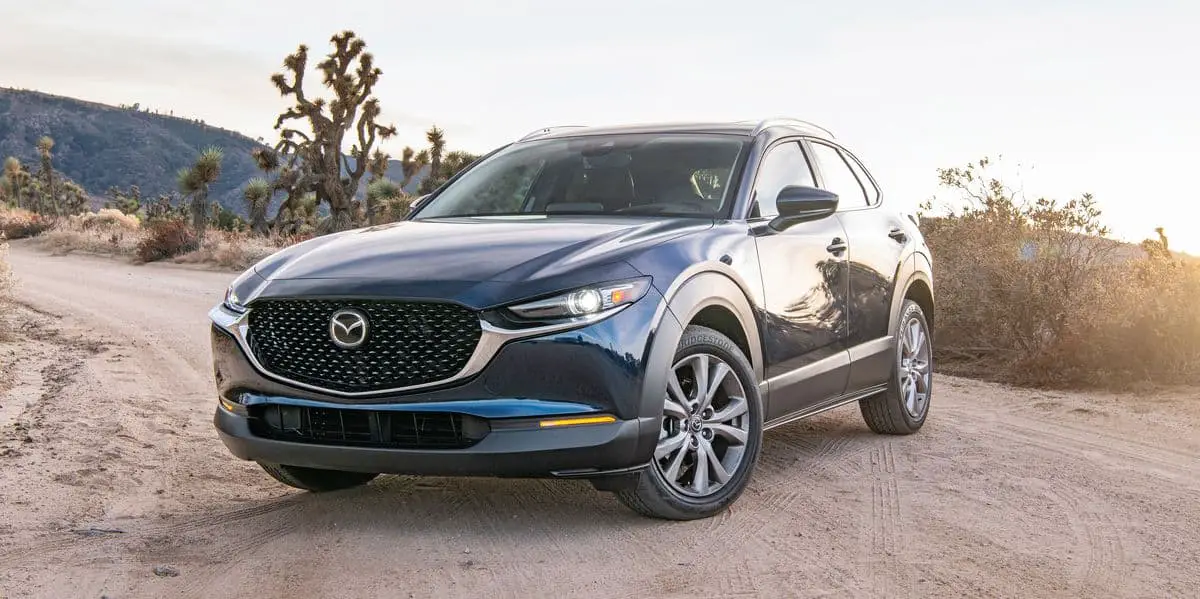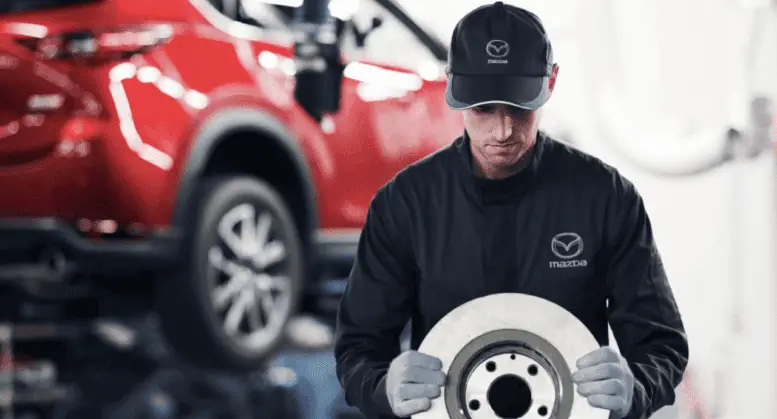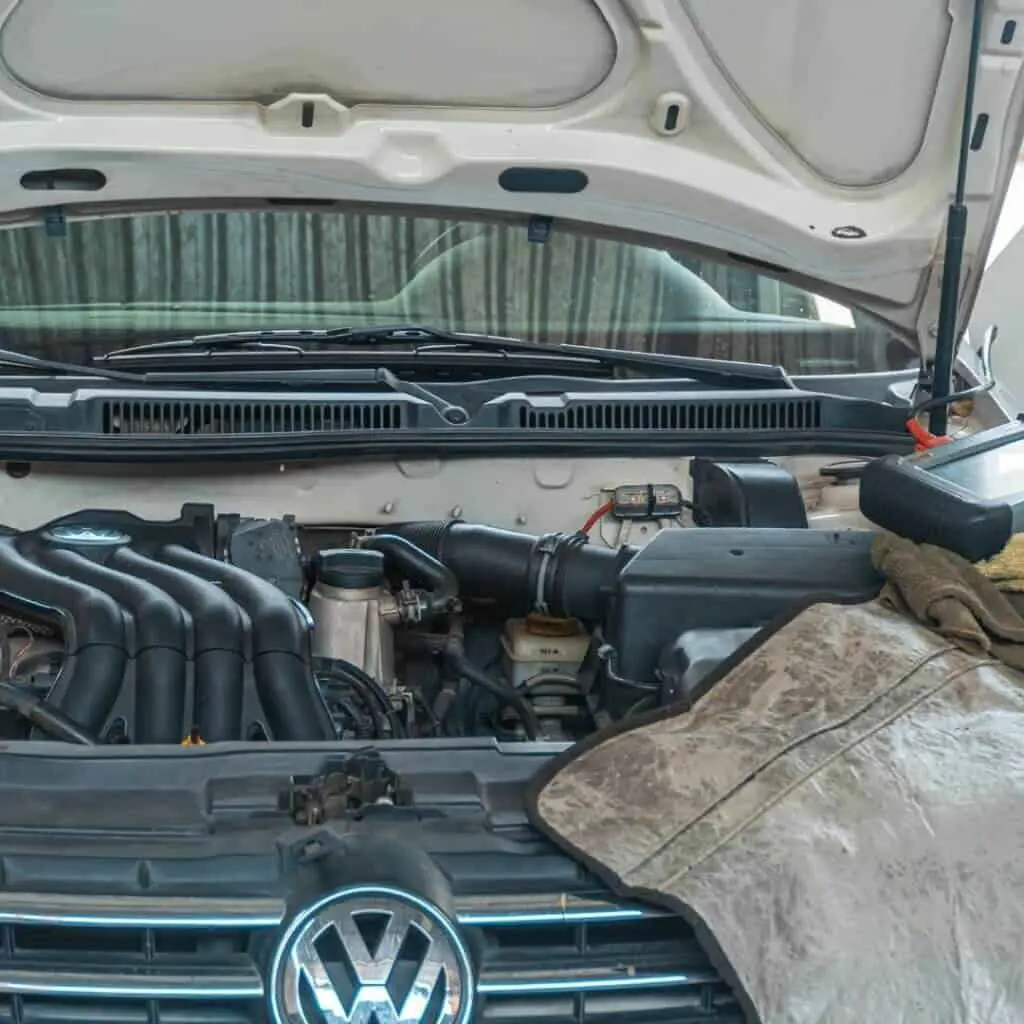Are you familiar with the Mazda CX-30 problems?
The Mazda CX-30 is a small compact crossover SUV. It was unveiled at the 2019 Geneva Motor Show, based on the fourth-generation Mazda 3. It is powered by 2.0-liter and 2.5-liter four-cylinder engines with 191 horsepower. The engine is coupled with either 2WD or 4WD manual or automatic transmissions.
The Mazda CX-30 strikes the ideal combination of space and style. To provide an exceptional driving experience, the bold design is combined with quality materials, finishes, and the most recent intelligent technology.
The 2023 Mazda CX-30 is the SUV to buy if you have taste and tact. It’s handsomely crafted and surprisingly pleasant to drive. However, despite its many advantages, the SUV has a few typical issues that might impair its performance and reliability.
This article will discuss the most common problems, potential solutions to the problems, and year models to avoid.
They include issues with the engine, the power steering system, transmission problems, brake system failure, misaligned headlights, safety features and windshield wipers issues.
Most Common Mazda CX-30 Problems

- Engine Issues
Customers have complained about the vehicle’s engine shutting down when the driver performs a turn. The engine stops accelerating, which could happen for a variety of reasons.
For example, a malfunctioning fuel system, a poor throttle position, or leaks caused by worn-out vacuum hoses around your Mazda CX-30’s engine could result in this problem.
The Mazda CX-30 2021 model, for instance, had an issue with excessive oil consumption. As a result, the oil levels would drop rapidly after a few miles, presenting trouble for the driver. Lubrication was the primary reason for the engine’s high oil consumption.
The spark plugs, fuel injectors, and engine timing chains may also fail due to poor maintenance. A defective fuel injector or a blocked fuel filter can also cause fuel injector troubles. The timing chain might also extend, causing the engine to misfire. [1]
- Power Steering System Issues
The Mazda CX-30 steering system may have problems with the steering pump, steering rack, and steering column. The pump can fail due to a lack of maintenance, leading to decreased power steering fluid pressure.
One common problem is the leaking of the power steering fluid. This can make turning the steering wheel difficult thereby causing the car to lose steering power. The steering rack and column might also wear out, resulting in a clunking noise when turning the wheel. [2]
Also, some drivers have observed shuddering or jerking of the steering wheel when turning, which is frequently caused by a worn or defective power steering belt. The power steering pump may fail in some situations, causing the steering wheel to be slow and unresponsive.
- Brake System Failure
The Mazda CX-30 has a smart braking system called Forward Collision Avoidance. Some customers have complained that it failed, causing them to collide with the vehicle in front. This problem was present in the 2019-2020 CX-30 models.
The vehicle might overheat while driving, forcing the smart system to engage independently. Some owners complain that the vehicle might slow down due to the smart braking system but does not stop when the brakes are applied.
This exposes the driver’s and passengers’ lives to danger. Another issue is that driving at 8mph may cause the warning light on the dashboard to flash, indicating an issue with the vehicle’s electrical system. [3]
- Misaligned Headlights
Some owners complain about the Mazda CX-30’s appearance, claiming that the headlights are set too high, which blinds other drivers at night. The National Highway Traffic Safety Agency (NHTSA) issued a recall affecting Mazda CX-30 cars in 2019 and 2020.
Although it is not a major issue, people allege that the Mazda CX-30’s factory-installed headlights are too bright for the human eye. You can take your car to a dealership or a mechanic and have dimmer headlights installed, or you can change the hue of your headlights. [4]
- Issues with Safety Features
Several issues with the vehicle’s safety system have been reported, including those involving the independent emergency braking system. The automatic system may intervene and arbitrarily apply the brakes even when there is no car or obstruction in front of them.
Another similar issue involves the electrical system. While traveling at a low speed, the brake assist warning light flickers, and the car brakes abruptly for no apparent reason. If the safety braking system fails, the car may pull to one side, leading one to lose control and cause an accident.
The safety features include rear and front parking sensors, a Smart Brake Assist System, a vision monitor, a rear crossing system, and other components. A safety system fault means that the automated system might independently, rendering the driver incapable of managing the car and causing an accident on busy roads. [5]
- Windshield and Wiper Issues
The Mazda CX-30 received a few complaints concerning the windshield wipers defect that produced visibility issues. Many users blame the distorted and somewhat deformed windscreen for reducing the driver’s view. [6]
They indicate that nighttime driving has grown unsafe due to the distorted perspective of the road and the opposite vehicle’s headlights. The wrapped glass reduces visibility and has also been linked to headaches and eye fatigue from prolonged exposure.
The problem may result from a manufacturing flaw and the fact that replacing the entire windshield is too expensive. There are several ways to identify if your windshield is damaged.
If it becomes scratched, cracked, or chipped for no apparent reason, it may be defective. In addition to being readily damaged, incorrectly sized windshields could lead to trouble as well.
Windshields are intricate car components that must be precisely fitted to your vehicle. When the rubber edges of your wiper are torn, it does not move smoothly across the windshield, reducing vision and making you drive dangerously.
Mazda CX-30 recalls
The Mazda CX-30 was subjected to several recalls shortly after its release. The recalls were issued due to a possible fuel leak, Hoses lines/piping and fittings, loosening front brake caliper bolts, a faulty power-operated liftgate, and a possible tire leak for the 2020 to 2021 models. [7]
Fortunately, the automaker moved swiftly to assess and attempt to correct most of the problems. And since all of these issues were adequately addressed, the new car models are now very stable.
What Mazda CX-30 model year should you avoid?
According to NHTSA studies, the Mazda CX-30 has a high level of dependability. With only a few years on the market, there have been only 2 recalls for vehicles made in 2020-2021. [8]
Possible Solutions to the Problems

The best way to prevent or solve problems with the Mazda CX-30 is to take it in for regular maintenance. This includes oil changes, tire rotations, and brake system inspections. The transmission should also be inspected and serviced.
For engine problems, regular maintenance tasks, including checking and replacing the spark plugs, inspecting the fuel injectors, and replacing the timing chain should be done.
For issues with headlight misalignment, one should have dimmer headlights installed, or change the hue of your headlights.
The brakes and power steering should also be inspected regularly to ensure they function properly. Regular maintenance, including checking and replacing the power steering fluid and inspecting the power steering pump, steering rack, and steering column should be carried out.
To prevent transmission problems, checking and replacing the transmission fluid, inspecting the transmission control module, and replacing the transmission filter should be done.
Read Also: Mazda CX8 Problems
Conclusion
The Mazda CX-30 is a reliable, excellent, and well-built vehicle. Although it is new to the market, it is quite trustworthy. There have already been a few issues, but nothing that would make it less safe to drive or cause severe problems.
Due to Mazda’s reputation for producing dependable vehicles, this car can endure 150,000 to 300,000 miles before requiring major repairs or replacements. The vehicle is built to last a long time. It has no major flaws that would cause it to break down or require frequent maintenance.
However, it is important to have regular servicing done, including checking and replacing fluids and inspecting the steering system, transmission, engine, safety features, and brakes. The car will provide reliable service for many years with proper maintenance and care.
Read Next: Chevrolet Captiva Problems




